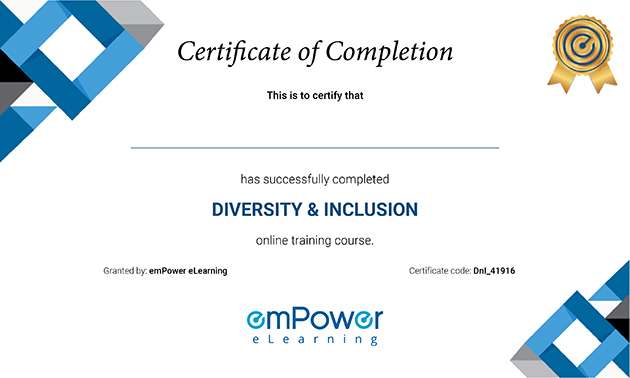Complete Sexual Harassment Training- California
Empower Your Workplace with California Harassment Training – Promoting Respect and Inclusion Statewide!

Our Client

































What is Sexual Harassment Training- California
The goal of the California harassment training is to help you understand what unlawful sexual harassment is, how to deal with it, and how California law protects you against harassment in the workplace. The California law considers sexual harassment as a form of employee discrimination and prohibits it in every form.
First, we’ll take a glance at the seriousness of the problem. We’ll look at different types of harassment and workplace conducts that fall under the preview of the California law. You’ll learn about unlawful retaliation and stereotyping.
Along with this, you’ll learn about bullying and workplace violence and how to act against such behavior.
Then, we’ll look at the employee’s and supervisors’ responsibilities under the law against harassment. And lastly, you’ll learn about the legal remedies you can pursue with public offices.
As per the California law, all workers need to take 1 Hour California harassment training. Supervisors and managers, on the other hand, need to go through 2 Hour California harassment training.
Course Description
| Category | Diversity, Inclusion, and Sensitivity |
| Course Name | Sexual Harassment Prevention – California |
| Duration | 30 mins |
| Certificate Included | Yes |
| Languages | English |
| Course Type | Interactive online training |
| Narration | Yes |
| Format | LM-light, SCORM 1.2 |
| Supported Devices | Desktop/Laptop, Tablet, Phone |
| Last Updated | June 30, 2021 |
What you’ll learn
- What is unlawful sexual harassment?
- Types of harassment
- Bullying and workplace violence
- How to respond to harassment?
- Employer’s responsibilities
- Supervisor’s and manager’s responsibilities
- Legal protections and external remedies
Curriculum
- Workplace sexual harassment – a serious problem!
- What is harassment?
- What is sexual harassment?
- What is Hostile environment?
- Prohibited workplace conduct
- Quid pro quo harassment
- Targets of sexual harassment
- Perpetrators of sexual harassment
- Where can workplace sexual harassment occur?
- What is sex stereotyping?
- Examples of sexual harassment
- What do you mean by protected activities?
- What is unlawful retaliation?
- What is Workplace bullying?
- Types of bullying
- Early warning signs of bullying
- How to act against bullying?
- What do you mean by workplace violence?
- Forms of Violence among co-workers
- Different levels of violence and response
- What are the employer’s responsibilities against harassment?
- Sexual harassment policy
- What are the supervisor’s and manager’s responsibilities against harassment?
- Consequences of sexual harassment
- What are the employee’s responsibilities against harassment?
- Investigation and corrective action
- Legal protections and external remedies
Who Should Attend?
- Business owners
- Contractual and company employees
- Employees in managerial and supervisory roles
- HR personnel responsible for addressing harassment
- Investigators and safety personal
Why emPower
100s of customers
- 14+ Years of experience in working with small to large businesses from different industries
- 95% customer retention
Customer Experience
- 24x7 dedicated support and toll free number
- 99%+ guaranteed uptime
Extremely Cost-effective
- As low as $0.99/user/yr
- We will match or better the price of your current LMS
Effective Courses
- Each course is 20-40 min long to ensure engagement with quizzes and certificate
- SCORM 1.2 Compliant
Implementation
- No setup costs
- We deploy your customized solution in less than 48 hours
Our Achievements
Here you can review some statistics about our Education Center
Start Your Certification Course Today
Under California law, incidents where a worker suffers unwanted and inappropriate conduct at work because of their protected characteristics, can be considered harassment. Such conduct can either be verbal, physical, or non-verbal. This includes unwanted touching, derogatory comments, display of posters, emails, threats, and unwelcome requests for sexual favors. Favoritism based on protected characteristics is also a form of harassment under the law.
However, for harassment to be illegal, you need to prove that they were targeted because of their protected characteristics and that the actions were motivated by an unlawful factor such as age, disability, ethnicity, gender, race, etc.
As per the California harassment prevention policy, it’s the duty of employers, managers, and supervisors to address all incidents of sexual harassment brought to their attention. The employers are also responsible for putting in place a system to facilitate victims to be able to report incidents without fear of retaliation.
California law makes workplace harassment, retaliation, and discrimination as unlawful activities. It also forces employers to take reasonable steps to prevent and address incidents of sexual harassment at their workplace. This includes training all workers, supervisors, and managers in their rights, duties, and responsibilities under the law.
In California, employees are protected by labor laws that cover minimum wage, overtime pay, rest and meal breaks, anti-discrimination, harassment, and family leave rights, ensuring fair treatment and workplace rights.

